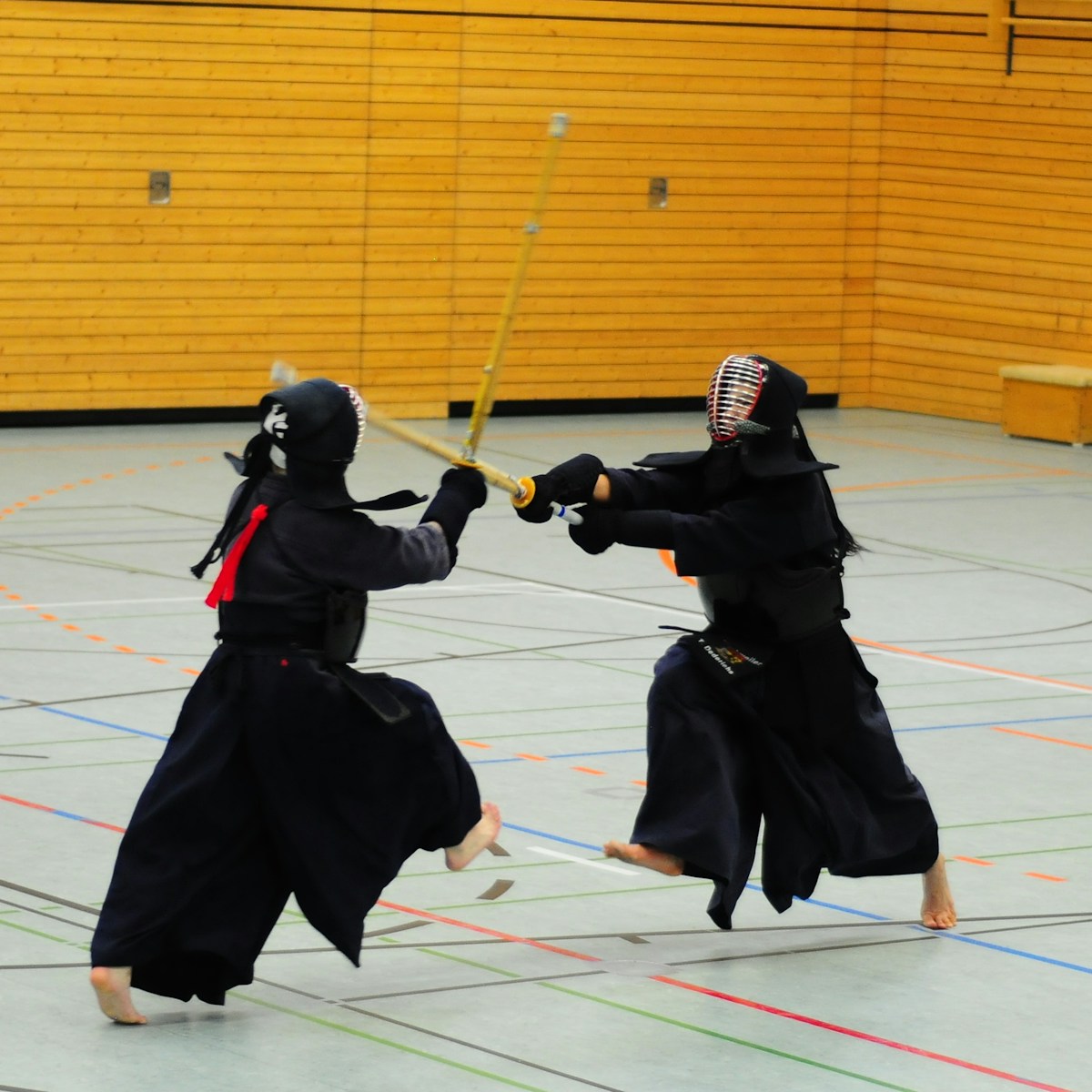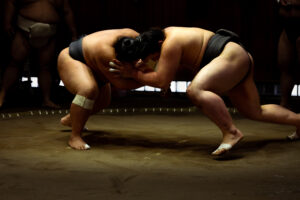Kendo, a martial art that epitomizes the essence of Japanese tradition and the indomitable spirit of the samurai, is a mesmerizing blend of physical prowess, mental discipline, and spiritual depth. Originating from the time-honored techniques of Japanese swordsmanship, this artful blade dance has transcended centuries to become a global embodiment of perseverance, respect, and self-improvement. As we delve into the world of Kendo, we uncover not just a sport but a profound way of life, steeped in history and rich in cultural significance. Join us on a journey through the artful blade of Japanese tradition, exploring the depths of Kendo from its ancient roots to its modern global presence.
Unveiling Kendo: Japan’s Elegant Martial Art
Kendo, meaning "The Way of The Sword," is a modern Japanese martial art that preserves the core principles of ancient samurai swordsmanship. This combat practice, which emerged from the samurai’s need for a methodical approach to train without fatal consequences, has evolved into a sport with rules, protective gear, and competitive matches. At its heart, Kendo is not merely about learning to strike an opponent but more about the personal journey and development that comes through disciplined practice. The art form emphasizes courtesy, honor, and respect, making it a holistic approach to personal growth. Kendo practitioners, known as kendoka, engage in a physical and mental training regimen that is vigorous and demanding, highlighting the art’s dedication to cultivating strength, precision, and mindfulness.
The Samurai Legacy: Kendo’s Historical Roots
The lineage of Kendo can be traced back to the samurai, Japan’s elite warrior class, whose existence shaped much of Japan’s cultural and political landscape. These warriors developed a range of martial techniques, collectively known as bujutsu, with kenjutsu, the art of the sword, at its core. Over centuries, as societal changes made the practical use of swords in battle obsolete, kenjutsu evolved into a means of personal cultivation and moral training. The transition from battlefield techniques to a structured discipline began in the Edo period (1603-1868), laying the foundation for what would become Kendo. The Meiji Restoration of 1868, which marked the end of samurai dominance, could have spelled the end for traditional swordsmanship; however, it instead transformed, incorporating aspects of modern sports while retaining its rich historical and spiritual essence.
Kendo Today: A Global Embodiment of Tradition
In contemporary times, Kendo has transcended its Japanese origins to gain a passionate following worldwide. This international spread has been facilitated by the efforts of Japanese immigrants and the global interest in Japanese culture. International Kendo federations and clubs have sprung up across continents, promoting not only the physical aspects of the sport but also its philosophical and ethical dimensions. Annual championships and exchanges have fostered a sense of global community among practitioners, who share a mutual respect for the art’s traditions and values. Despite its global reach, Kendo remains deeply rooted in Japanese culture, serving as a living bridge between Japan and the world, and a vibrant expression of the country’s enduring legacy.
The Way of the Sword: Exploring Kendo Techniques
Kendo techniques, or waza, are categorized into strikes and thrusts, targeting specific areas on the opponent’s body. The primary targets are the men (head), kote (wrist), do (torso), and tsuki (throat). Mastery of these techniques requires years of dedicated practice, focusing on precision, timing, and control rather than brute strength. Footwork, or ashi-sabaki, plays a crucial role in creating opportunities for attack and defense, emphasizing agility and balance. Kendoka also practice kiai, the spirited shout that accompanies each strike, believed to unite the spirit, body, and sword. Training sessions often include bouts called keiko, where practitioners spar to apply techniques in dynamic situations, fostering quick thinking and adaptability.
The Gear of the Warrior: Understanding Kendo Armor
Kendo armor, or bogu, is designed to protect practitioners during matches while allowing freedom of movement. The set consists of four main pieces: the men (helmet), do (breastplate), kote (gauntlets), and tare (waist protector). Each piece is meticulously crafted, balancing the need for protection with the requirement for lightweight flexibility. The men protects the head and face with a combination of sturdy fabric and metal grilles, while the do shields the chest and stomach. The kote safeguard the wrists and hands, critical strike targets in Kendo, and the tare covers the waist and hips. Wearing the bogu properly is an art in itself, reflecting the kendoka’s readiness and respect for the discipline.
Kendo Kata: A Dance of Precision and Discipline
Kata, pre-arranged forms performed with wooden swords or bokken, are an integral part of Kendo training, emphasizing the art’s deep roots in traditional swordsmanship. These forms, practiced by two partners, encapsulate the essence of attacks and counterattacks, teaching the principles of timing, distance, and rhythm. There are ten standard kata, each illustrating fundamental concepts and techniques that build a practitioner’s skill and understanding. Executing these kata with fluidity and precision requires not just physical ability but also a deep mental focus, making them a meditative exercise that sharpens the mind as much as the body.
The Zen of Kendo: Spiritual Growth Through Combat
Beyond the physicality and techniques, Kendo offers a path to spiritual growth. The rigorous training and discipline demanded by the art form cultivate qualities such as patience, perseverance, and humility. Kendoka learn to face their fears and limitations, transcending them through focused practice. This pursuit of self-improvement and mastery over oneself resonates with Zen principles, making Kendo a deeply introspective endeavor. The dohyo, or practice hall, becomes a place for meditation in motion, where practitioners seek not only to refine their skills but also to achieve a state of mental clarity and emotional balance.
Kendo Competitions: Where Tradition Meets Sport
Kendo competitions, or shiai, offer kendoka the opportunity to test their skills against others in a controlled environment. These tournaments are not just about winning but are considered an extension of training, emphasizing respect, honor, and the pursuit of excellence. Matches are judged based on the precision of strikes, the spirit shown by the competitors, and adherence to the principles of Kendo. The World Kendo Championships, held every three years, is the pinnacle of these competitions, drawing participants from around the globe. These events foster camaraderie among practitioners and serve as a showcase for the highest ideals of Kendo.
Mastering the Blade: The Path to Kendo Expertise
The journey to becoming a master in Kendo is long and challenging. It involves not only refining physical techniques but also developing the mental and spiritual aspects of the art. Dan rankings, achieved through rigorous examinations, mark a practitioner’s progression, but the true measure of expertise is one’s character and understanding of Kendo’s deeper principles. Mastery is seen not as an endpoint but as a continual process of learning and self-discovery. Veteran kendoka often speak of a lifelong commitment to the art, highlighting the dedication required to pursue the way of the sword.
Kendo Dojos: Sanctuaries of Swordsmanship
Kendo dojos, where practitioners train, are more than mere physical spaces. They are sanctuaries that nurture discipline, respect, and the spirit of the samurai. The layout and atmosphere of a dojo are designed to foster a sense of community and dedication to the art. Joining a dojo involves embracing its traditions and customs, contributing to a shared pursuit of excellence. These training halls are integral to preserving Kendo’s heritage, acting as centers of learning where the ancient and the modern converge.
Kendo for All: Inclusivity in the Art of the Sword
Kendo welcomes practitioners of all ages, genders, and backgrounds, embodying the principle of inclusivity. This openness reflects the art’s adaptability and its relevance in today’s diverse world. Women and children, alongside men, find empowerment and a sense of belonging in Kendo, challenging stereotypes and breaking barriers. The art form’s emphasis on personal growth and mutual respect makes it accessible and appealing to a broad audience, fostering a global community united by the love of the sword.
Beyond the Dojo: Kendo’s Influence on Japanese Culture
Kendo’s impact extends far beyond the dojo walls, influencing various aspects of Japanese culture. From literature and cinema to modern-day anime and manga, the ethos and aesthetics of Kendo permeate Japanese artistic expressions. This martial art also plays a role in personal and professional development, with its principles applied in leadership, education, and conflict resolution. As a cultural ambassador, Kendo embodies the spirit of Japan, promoting values such as honor, discipline, and perseverance, and contributing to the global understanding of Japanese tradition.
Kendo, the artful blade of Japanese tradition, stands as a testament to the timeless appeal of the samurai spirit. It is a discipline that challenges the body, sharpens the mind, and nurtures the soul, offering a path to personal transformation through the way of the sword. As Kendo continues to thrive and expand across the globe, it remains a vibrant link to Japan’s past, a mirror of its present, and a beacon for the future, uniting practitioners in a shared journey of relentless pursuit and profound respect. Through the clash of bamboo swords, the spirit of the samurai lives on, resonating with the hearts of those who walk the path of Kendo, the elegant and enduring martial art of Japan.








